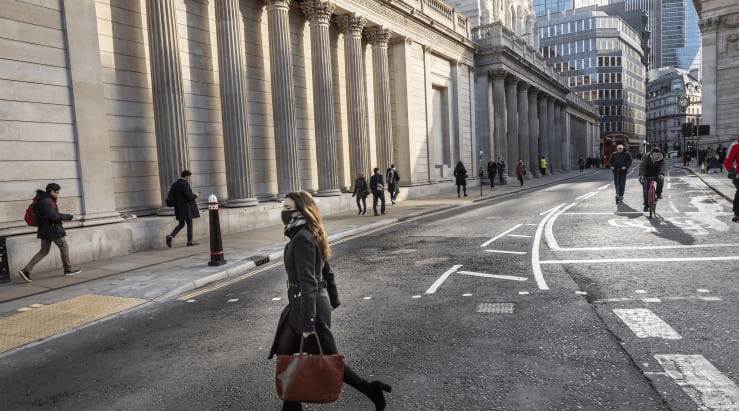Bank of England expected to expand bond buying, but it’s wait-and-see on negative rates
June 18, 2020 @ 10:54 +03:00
The Bank of England is expected to expand its quantitative easing program on Thursday, but economists do not expect negative interest rates to be implemented this time around.
The Bank’s latest monetary policy decision comes as the U.K. economy attempts to recover from an unprecedented 25% contraction across March and April as lockdowns forced by the coronavirus pandemic hammered economic activity. Although a modest recovery appears to be underway, economists expect that the central bank has more work to do.
Since the start of the pandemic, the BOE has cut rates twice from 0.75% to 0.1% and announced £200 billion ($247.55 billion) of new quantitative easing, bringing its bond-buying program to a total of £645 billion.
When the Bank’s Monetary Policy Committee (MPC) pledged to add the most recent £200 billion in March, two policymakers voted to add an additional £100 billion to the Asset Purchase Facility (APF) target.
Headline inflation slipped to 0.5% in May from 0.8% a month earlier, and ING expects this inflation gauge to stay between 0-0.5% until the fall, and probably below 1% through to the beginning of 2021.
The U.K. has avoided the spike in unemployment seen in the U.S. in large part due to the government’s furlough scheme, which subsidizes 80% of the wages for employees furloughed as a result of the pandemic. However, there is some concern over what may transpire when this state support is unwound.
Bank of England Governor Andrew Bailey told a parliamentary committee in late May that the possibility of taking Britain into negative rate territory was under “active review.”
Negative rates effectively pay businesses and individuals to borrow money and penalize banks for depositing cash, therefore in theory encouraging them to invest and spend more — actions that help the economy to grow. They are currently in place in the euro zone and Japan, but the U.S. Federal Reserve has so far been vocal in ruling out negative rates for the foreseeable future.
With U.K. investment underperformance since the Brexit referendum now exacerbated by the Covid-19 crisis, ING expects productivity growth to remain minimal and the neutral rate of interest to fall, meaning the level of benchmark interest rates become “decreasingly stimulative.”
Bank of England expected to expand bond buying, but it’s wait-and-see on negative rates, CNBC, Jun 18








